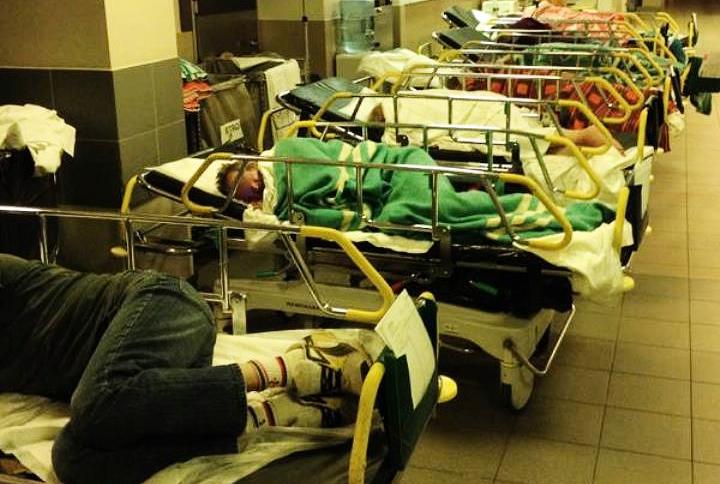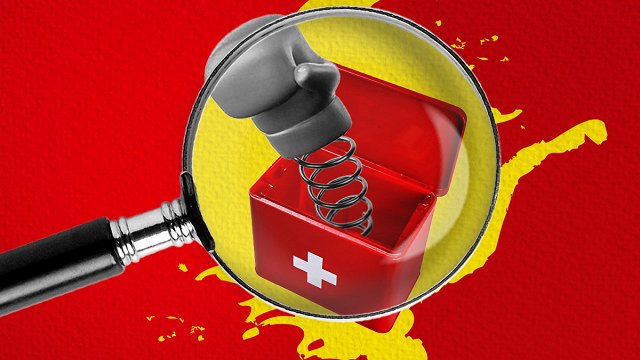On average every tenth patient has remained in arrears for their medical service bills over the course of many years, while the sums have grown into one of Europe’s largest health care sector debts.
The Panorāma news crew visited the emergency reception desk at Gaiļezers Hospital and noted people waiting who looked anything but in need of urgent medical care. None seemed to be in acute pain, some tinkered with their smart phones, seemingly bored.
The clinic’s staff at that moment was busy saving lives: a broken neck from a motorcycle accident; someone bleeding internally; a woman suffering from a stroke, immobile. All attention must be given these acute cases.
Yet doctors wind up explaining to the nonchalant out-patients that they must wait hours for a sonogram or x-ray. Usually the wait at the clinic by regular registration takes from two weeks to two months. Radiologists take about 200 diagnostic x-rays daily.
As of August 1 the total patient debt to the hospital stood at €3.2m. Debtors are retired persons, students and the unemployed alike. Low-income and social-risk families. There are also bad-faith deadbeats among them. Court bailiffs manage to recover perhaps one-fifth of the unpaid bills.
“I wouldn’t exactly call it scamming, but they know they can use our services and get them quickly, without considering that there is simply no financial coverage for it,” explained Urgent care clinic head Aleksejs Višņakovs.
In a month about 6,500 patients flow through here. Every fifth person is in critical condition, where minutes can decide one’s fate. But every third person does not even need to be here, but rather should be making a regular appointment with their family doctor.
Last Friday the Eastern Hospital even tweeted a shot of the flood of students checking in after partying too hard during back-to-school week.
Augstskolās fukšu balles - Neatliekamās palīdzības klīniku naktī pārpludina pārdzērušies studenti. pic.twitter.com/2UK5dw6kDX
— Aslimnīca (@Aslimnica) September 5, 2014
Meanwhile the state transfers as much funding to the hospital budget as it can afford, not according to the actual costs of services. Often the sum makes up just one-tenth of what it really cost to save a patient’s life.


























